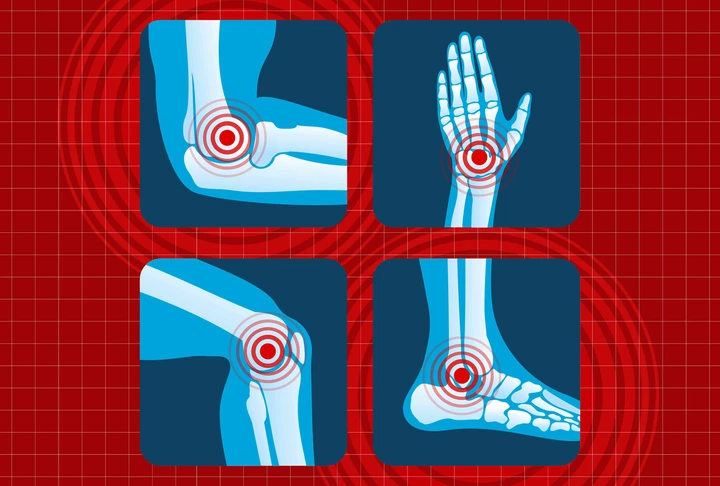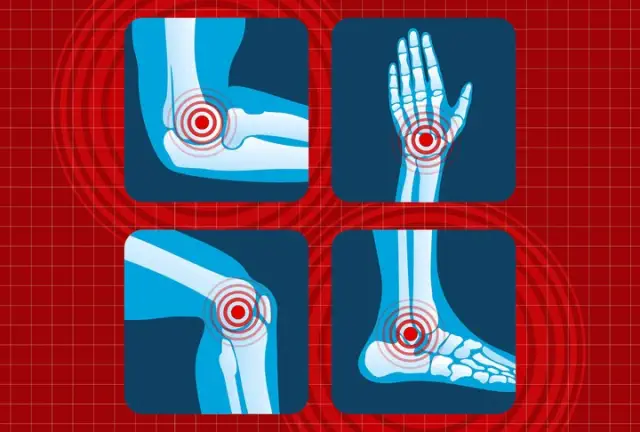If you're experiencing discomfort, tightness, and inflammation, here’s what you should be aware of immediately.
Evaluated by Nutritionist Karen Ansel, M.S., RDN
View pictures in App save up to 80% data.
Arthritis ranks among the most prevalent chronic health issues, impacting more than 53 million adults in the United States. It is important to note that arthritis is not just one disease; the Arthritis Foundation indicates that this extensive condition encompasses over 100 distinct types of arthritis and associated ailments.
Although arthritis is commonly linked to older individuals, it can affect individuals across all age groups. Over one-third of those suffering from this condition report that it hinders their capacity to work and fully engage in life. Despite its widespread occurrence, numerous misconceptions surrounding arthritis continue to exist, resulting in misunderstandings regarding its origins, treatment options, and management techniques.
In order to distinguish between reality and misconceptions, we explored various studies to clarify the prevalent myths surrounding arthritis. Our goal is to offer evidence-backed information that will enhance your understanding and management of this widespread condition. Here’s what you should be aware of.
Related: 5 Supplements You Shouldn't Take for Arthritis, According to Experts
Myth 1: Arthritis Is Only a Condition for the Elderly
“While arthritis may seem more common in the older population, it certainly isn’t limited to a specific age group and can affect people of any age,” says Sarah Schlichter, M.P.H., RDN, a registered dietitian and owner of Bucket List Tummy.
The Centers for Disease Control and Prevention reports that almost 50% of adults affected by arthritis are younger than 65. Although osteoarthritis tends to be more prevalent among older individuals because of the natural degradation of joints, arthritis can affect people of all ages. Disorders such as rheumatoid arthritis, juvenile idiopathic arthritis, and psoriatic arthritis can arise in younger adults and even in children.
In reality, factors such as genetics, infections, injuries, and lifestyle choices can elevate your risk, no matter your age.
Myth 2: Knuckle Cracking Leads to Arthritis
You may have heard that cracking your knuckles can result in arthritis. This common belief probably originates from the sound produced during the act, which some people might mistakenly believe indicates harm to the joints.
Although research on this topic is limited, several studies indicate that there is no connection between knuckle cracking and the onset of arthritis. The noise produced is thought to result from the release of gas bubbles in the synovial fluid that acts as a lubricant for the joints, rather than from the friction of bones rubbing against each other.
Although cracking your knuckles might irritate people nearby, it doesn't pose any harm to your joints and won't result in arthritis.
Myth 3: Physical Activity Exacerbates Arthritis
Individuals suffering from arthritis often grapple with the anxiety of increased joint pain or potential damage, which can lead to a reluctance to engage in physical activity. Nevertheless, remaining inactive may exacerbate arthritis symptoms as time goes on.
Studies indicate that engaging in physical activity can offer numerous advantages, particularly by fortifying the muscles around the joints, enhancing flexibility, and alleviating inflammation. Additionally, it might help avert the deterioration of cartilage and lessen discomfort and rigidity in the joints. The Arthritis Foundation highlights that exercise is among the most effective methods for alleviating pain associated with osteoarthritis and enhancing mobility. Gentle activities such as walking, cycling, or using elliptical machines can be particularly beneficial.
If you suffer from arthritis, it's important to consult with your doctor or physical therapist prior to beginning any exercise regimen. They can assist you in identifying the most suitable forms of physical activity tailored to your specific requirements.
Myth 4: All Forms of Arthritis Are Identical
Arthritis is frequently regarded as a single illness. However, as previously mentioned, it encompasses a wide range of disorders that impact the joints. The two most prevalent forms—osteoarthritis and rheumatoid arthritis—each have unique causes and approaches to treatment.
Osteoarthritis stands as the most prevalent form of arthritis, marked by a gradual deterioration of joint tissues over time. Although the precise origin remains unclear, it can adversely affect cartilage, tendons, ligaments, bones, and other structures. In contrast, rheumatoid arthritis is an autoimmune condition where the immune system erroneously targets the joints, resulting in inflammation and potential joint damage, which may cause pain, stiffness, and swelling.
If you are dealing with joint pain, it's important to consult your healthcare professional for an accurate diagnosis. Gaining insight into the causes and treatment options for your particular type of arthritis is crucial for effective management of the condition.
Related: Having One Autoimmune Condition Can Increase Your Chance of Developing Others—Here’s Why
Myth 5: Arthritis is Unmanageable and There’s No Way to Improve It
Although arthritis is a long-term condition without a definitive cure, there are various methods to alleviate symptoms and enhance your overall well-being, including modifications to your diet. “The food you eat can influence arthritis symptoms, and prioritizing anti-inflammatory options like seafood, fruits, vegetables, and particular supplements may lead to symptom relief,” explains Schlichter.
Although there isn't a specific diet tailored exclusively for alleviating arthritis symptoms, the Mediterranean diet appears to be a promising option. This diet is rich in anti-inflammatory foods such as fatty fish, a variety of fruits and vegetables, as well as nuts and seeds. Studies suggest that it may be especially advantageous for individuals with rheumatoid arthritis.
Related: The Best & Worst Foods for Your Joints
Approaches to Handle Arthritis
If you are dealing with arthritis, consider these evidence-supported techniques that could help alleviate pain, allowing you to enjoy life to the fullest.
- Stay Active: Incorporate low-impact exercises like swimming, biking or walking into your daily routine to improve joint health and mobility.
- Eat an Anti-Inflammatory Diet: Fill your plate with inflammation-fighting whole foods like fruits, vegetables, nuts, seeds, whole grains, legumes and fatty fish. This 30-Day Anti-Inflammatory Meal Plan is a great place to get started.
- Maintain a Healthy Weight: Excess body weight puts pressure on your joints, which can add to wear and tear over time. Weight management can help relieve this pressure and the pain that comes with it.
- Manage Stress: We don’t have to tell you that living with a chronic health condition, like arthritis, can be stressful. The link is so powerful that studies have found that people with rheumatoid arthritis often experience an uptick in symptoms when they’re under stress. Incorporating science-backed stress management techniques like mindfulness, meditation and therapy may help calm your mind and possibly your symptoms.
The Key Takeaway
Arthritis is a multifaceted condition often surrounded by various myths and misunderstandings. Gaining insight into its underlying causes and available treatment options can empower you to take charge of your symptoms, promote joint wellness, and enhance your overall quality of life. From engaging in physical activity and adopting a nutritious diet to exploring medical interventions, there are numerous approaches to alleviate your discomfort and enable you to resume your daily activities.
If you're dealing with joint discomfort, don't ignore it. Consult your physician. The earlier you seek help, the more relief you'll find!
Read the original article on EATINGWELL










